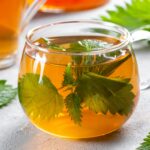When we delve into the world of culinary herbs, a common question often arises: is basil the same as bay leaves? While both herbs are staples in various cuisines, they are distinct in their characteristics, uses, and culinary applications. Understanding these differences can enhance your cooking and appreciation for these aromatic plants.
Understanding Basil
Basil, scientifically known as Ocimum basilicum, is an aromatic herb from the mint family, Lamiaceae. Native to tropical regions from central Africa to Southeast Asia, basil is a tender plant used in cuisines worldwide. The most common variety is sweet basil, which is frequently used in Italian dishes, such as pesto, salads, and pastas. However, there are many other varieties, including Thai basil, lemon basil, and holy basil, each with its unique flavor profile.
Characteristics of Basil
Basil leaves are typically bright green, though some varieties can have purple leaves. The leaves are soft, and tender, and have a smooth texture. When it comes to flavor, basil is known for its sweet and slightly peppery taste, with hints of mint, anise, and clove.
Culinary Uses of Basil
Basil is incredibly versatile in the kitchen. Here are some popular uses:
- Pesto Sauce: Made by blending fresh basil leaves with pine nuts, Parmesan cheese, garlic, and olive oil.
- Caprese Salad: A simple salad of fresh tomatoes, mozzarella, and basil leaves, drizzled with olive oil and balsamic vinegar.
- Herbal Infusions: Basil can be infused into oils, vinegars, and even beverages for an aromatic twist.
Understanding Bay Leaves
In contrast to basil, bay leaves come from the Laurus nobilis tree, which is an evergreen native to the Mediterranean region. Known as bay laurel, this herb has been used since ancient times for its aromatic leaves, which are often used to flavor soups, stews, and braises.
Characteristics of Bay Leaves
Bay leaves are typically dark green, glossy, and thick with a leathery texture. Unlike basil, bay leaves are usually used whole and discarded before serving, as they remain tough even after cooking. Their flavor is more subtle compared to basil, offering a herbal, slightly floral taste with notes of pine and eucalyptus.
Culinary Uses of Bay Leaves
Bay leaves are a cornerstone in many slow-cooked dishes. Here are some common applications:
- Soups and Stews: Added to slow-simmering soups and stews to infuse a deep, complex flavor.
- Braised Dishes: Used in braises, such as pot roast or braised short ribs, to enhance the savory elements.
- Pickling: Often included in pickling brines for an added layer of flavor.
Is Basil the Same as Bay Leaves?
Given the distinct characteristics and uses of basil and bay leaves, we can confidently answer that basil is not the same as bay leaves. They come from different plant families and regions, and their culinary applications vary significantly. Here’s a closer look at the differences and why they matter in cooking.
Differences in Flavor Profile
- Basil: Sweet, peppery, and aromatic with hints of mint and anise.
- Bay Leaves: Subtly floral, herbal, with notes of pine and eucalyptus.
Differences in Texture
- Basil: Soft, tender leaves that can be eaten raw or cooked.
- Bay Leaves: Tough, leathery leaves that are typically removed before eating.
Differences in Culinary Uses
- Basil: Best used fresh in dishes that benefit from its bright, aromatic flavor.
- Bay Leaves: Best used dried in slow-cooked dishes to impart a deeper, more complex flavor.
Common Misconceptions
Despite their differences, there are a few misconceptions that lead people to ask, “is basil same as bay leaves?”
Misconception 1: They Can Be Used Interchangeably
One common misconception is that basil and bay leaves can be used interchangeably. While both herbs add flavor to dishes, substituting one for the other can result in a dish that tastes very different from what was intended. For example, adding basil to a slow-cooked stew instead of bay leaves would not provide the same depth of flavor, while using bay leaves in a fresh pesto would be impractical and likely unpalatable.
Misconception 2: They Have Similar Health Benefits
Another misconception is that basil and bay leaves offer similar health benefits. While both herbs have medicinal properties, they differ in their specific benefits and uses. Basil is often used for its anti-inflammatory and antibacterial properties, while bay leaves are known for their digestive benefits and ability to relieve respiratory conditions.
How to Use Basil and Bay Leaves Effectively
To make the most of basil and bay leaves in your cooking, it’s important to use them in ways that highlight their unique qualities.
Tips for Using Basil
- Use Fresh When Possible: Fresh basil leaves provide the best flavor for most dishes. Add them at the end of cooking to preserve their delicate flavor.
- Store Properly: Keep fresh basil in a glass of water on the countertop, like a bouquet of flowers, or refrigerate it covered loosely with a plastic bag. Dried basil should be stored in an airtight container away from light and heat.
- Pair with Complementary Ingredients: Basil pairs well with tomatoes, garlic, lemon, and mozzarella cheese. It is also a key ingredient in many Mediterranean and Southeast Asian recipes.
Tips for Using Bay Leaves
- Add Early in Cooking: Bay leaves release their flavor slowly, so add them at the beginning of cooking to allow their full essence to infuse into the dish.
- Remove Before Serving: Always remove bay leaves before serving the dish, as they remain tough and can be a choking hazard if swallowed.
- Store Dried Bay Leaves Properly: Keep dried bay leaves in an airtight container away from light, heat, and moisture to maintain their potency.
Conclusion
So, is basil same as bay leaves? Clearly, they are not. Each herb brings its own unique set of characteristics, flavors, and applications to the table. While basil shines in fresh, vibrant dishes, bay leaves work their magic in slow-cooked, hearty meals. Understanding these differences allows you to use each herb to its fullest potential, enhancing your culinary creations.
By appreciating the distinct qualities of basil and bay leaves, you can expand your culinary repertoire and experiment with new flavors. Whether you’re making a fresh Caprese salad or a rich, savory stew, knowing when and how to use these herbs will elevate your cooking and bring out the best in your dishes.
Final Thoughts
In the diverse and flavorful world of cooking, herbs like basil and bay leaves play crucial roles. They are not only flavor enhancers but also bring a wealth of nutritional benefits to our meals. By learning about their unique properties and best uses, we can make informed decisions in the kitchen and enjoy a richer culinary experience. So the next time you find yourself wondering, “is basil same as bay leaves?” you’ll know just how different and special each of these herbs truly is.
–




